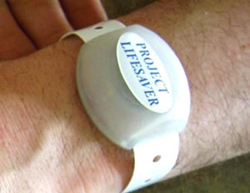For two years I've been salivating over the prospect of watching the New York Yankees and the West Virginia Mountaineers on a big screen television. For two years I've agonized over what brand to go with, how big of a screen I should invest in, and whether I should go LCD or plasma, high-def or low-def, 720i or 1080p?
The decision only got more complicated the more time I spent studying the matter, as evolving technologies presented new choices. Rather than extend this dilemma, I recently bit the proverbial bullet and went with a Sharp Aquos LCD set, a 42-inch beauty I'm still trying to figure out. My rewards for waiting those two years not only were getting the latest in technology, but getting the set at a great price of $1599.
True, I could have paid many thousands of dollars more, but this set is probably bigger than I need and will suit my needs for, hopefully, the next 20 years, the period of time my now-replaced set dutifully turned on, and off, and on.
So what's a television set got to do with the National Park Service? Well, for the price of a helluva new TV, say around $5,000 for a really, really big LCD or plasma set, the agency could move forward to the next generation of technology to help safeguard its rangers.
But apparently the agency, the same one that has spent many, many millions on studying and re-studying snowmobiles in Yellowstone and which had an obscene travel budget under Fran, can't seem to come up with $5,000 to field test a wristwatch-sized tracking system.
 Project Lifesafer is a Virginia-based organization that works with law enforcement agencies to find missing persons. One of the tools it uses is a tracking device that one wears like a wristwatch. Radio technology utilized in the device emits a tracking signal that can be used to locate the individual wearing the device.
Project Lifesafer is a Virginia-based organization that works with law enforcement agencies to find missing persons. One of the tools it uses is a tracking device that one wears like a wristwatch. Radio technology utilized in the device emits a tracking signal that can be used to locate the individual wearing the device.
The signal's range is about 1 mile for ground searchers and about 7 miles for those searching via aircraft.
According to a story in the Virginian-Pilot, NPS officials have been talking to this group about the devices with thoughts of outfitting backcountry rangers and search-and-rescue teams with them.
Dan Pontbriand, the Park Service's chief of emergency services, says the agency is considering several different tracking devices. He told the newspaper that Project Lifesaver's device is particularly interesting because it doesn't require satellite communications, is lightweight, and sends out a continuous signal for 45 days.
That continuous signal is particularly attractive, because it negates the need for a lost individual to actively turn it on, something that could be impossible if the individual is unconscious.
However, Pontbriand told the paper, the Park Service doesn't currently have $5,000 it can spare to field-test the devices.
Note to Mary: If Fran can find $10 million for a visitor center at Mesa Verde National Park, surely you can rummage up $5,000 for this testing.

 Support Essential Coverage of Essential Places
Support Essential Coverage of Essential Places






